All products featured are independently chosen by us. However, SoundGuys may receive a commission on orders placed through its retail links. See our ethics statement.
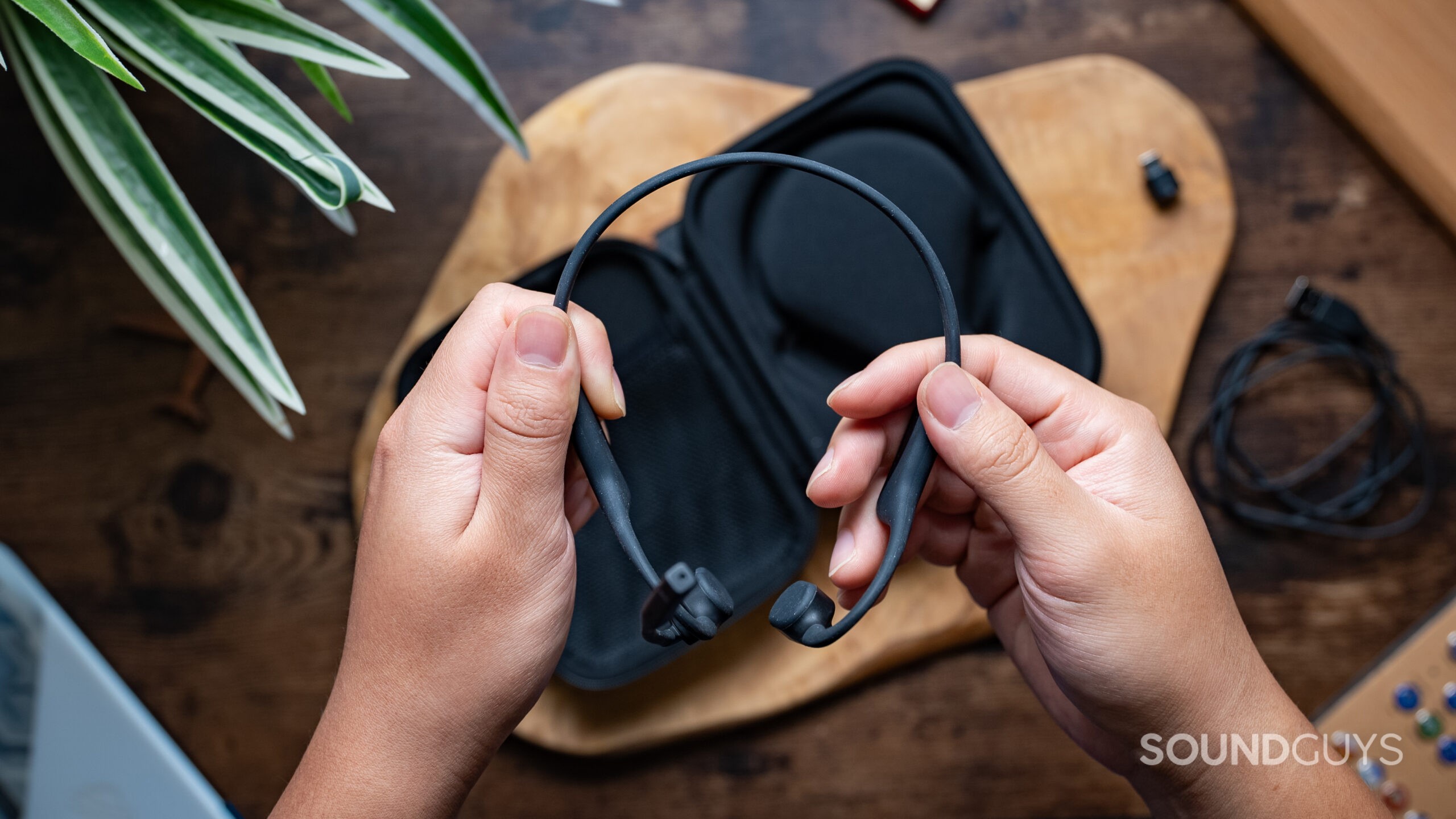
Shokz OpenComm2 UC review
November 27, 2023
Shokz OpenComm2 UC
Shokz updates the Shokz OpenComm with a sequel, the Shokz OpenComm2 UC, which we’re checking out today. This bone conduction headset comes with a boom mic alongside some Zoom-friendly features. We take a look at the OpenComm2 to see if it’s your new office companion.
Editor’s note: this is the first version of the article. Updates will follow as the market changes.
The Shokz OpenComm2 UC is for office workers and remote workers. The mic sounds great, and it’s a very call-oriented design. The OpenComm2 UC also has dedicated mute buttons and can connect to your computer via a USB adapter or your phone with Bluetooth. Folks who frequently switch between devices will appreciate how easy it is with the OpenComm2 UC’s Bluetooth multipoint functionality.
What’s it like to use Shokz OpenComm2 UC?
The Shokz OpenComm2 UC comes in a lightweight semi-hardshell zippered case. Opening it up, you’ll find the silicone-covered headset with a tiny pocket for the Loop110 USB-C Bluetooth dongle and a USB-A charge cable with a proprietary connector. Getting started is easy: you either plug the USB-C dongle into your PC or connect it to your phone via standard Bluetooth procedure. The headset uses bone conduction, which differs from traditional headphones by bypassing the ear canal, leaving your ears open to the world.
An IP55 rating means the OpenComm2 UC can survive the most stressful phone calls. In a pinch, you can rotate the mic back and go for a jog. Although, you probably want something meant for running if that’s your primary use case.
Fit foul
Unfortunately, the OpenComm2 UC’s fit does not impress me, as it seems to suffer from the problem that one-size-fits-most designs have: one size fits some. The OpenComm2 UC wraps around the back of your head and goes over the ears. Ideally, the headset should stay put with the transducers resting in front of the ears and distributing some of the weight. If you have a small noggin, the silicone band that wraps around the back of your head droops down, and the frame incorrectly rests all the weight on the top of the ears. Meanwhile, the transducers won’t sit for long where intended, negatively impacting the sound.

While the internal titanium frame is where it derives strength, it doesn’t allow size adjustment. This deserves attention because the Shokz OpenComm2 UC is clearly meant for offices, where meetings and phone calls can take a long time. In contrast, traditional headsets already figured fit out.
How do you control the Shokz OpenComm2 UC?
You’ve got four buttons on the Shokz OpenComm2 UC, and they reside on the right side of the frame just behind the ear, on the mic, and on the left side where the speaker sits.
| Action | Multi-function button | Volume up | Volume down | Volume up and down together | Mic button |
|---|---|---|---|---|---|
| Action Single press | Multi-function button Play / Pause / Answer / End call / Answer incoming call and place current call on hold / Switch between two calls / | Volume up Increase volume | Volume down Decrease volume | Volume up and down together | Mic button Mute / unmute |
| Action Double press | Multi-function button Track forward / Switch language while in pairing mode | Volume up | Volume down | Volume up and down together | Mic button |
| Action Triple press | Multi-function button Track backward | Volume up | Volume down | Volume up and down together | Mic button |
| Action Press and hold for 2 seconds | Multi-function button Reject call / Answer a call while ending a current call / Ending a call while switching a call on hold / Activate voice assistant | Volume up Power on and Bluetooth pairing | Volume down | Volume up and down together Cycle EQ modes | Mic button |
| Action Press and hold briefly | Multi-function button N/A | Volume up Power on | Volume down | Volume up and down together | Mic button |
The buttons work without hiccups; however, the OpenComm2 UC emits overly loud beeps each time the volume is adjusted. This is unpleasant, especially as you’re turning down the volume, and the beeping stays too loud. One critique is that the multi-function button does many different things with phone calls, and you’ll need to commit those to memory. If you get it wrong, it’s possible to hang up on someone when intending to place the call on hold, for example.
Should you use the Shokz Connect for the Shokz OpenComm2 UC?
The Shokz Connect software is for your Mac or PC, not for mobile devices. When used in concert with your Loop110 USB adapter, you can update firmware and change the language. Unless you experience bugs, you don’t need Shokz Connect.
How does the Shokz OpenComm2 UC connect?
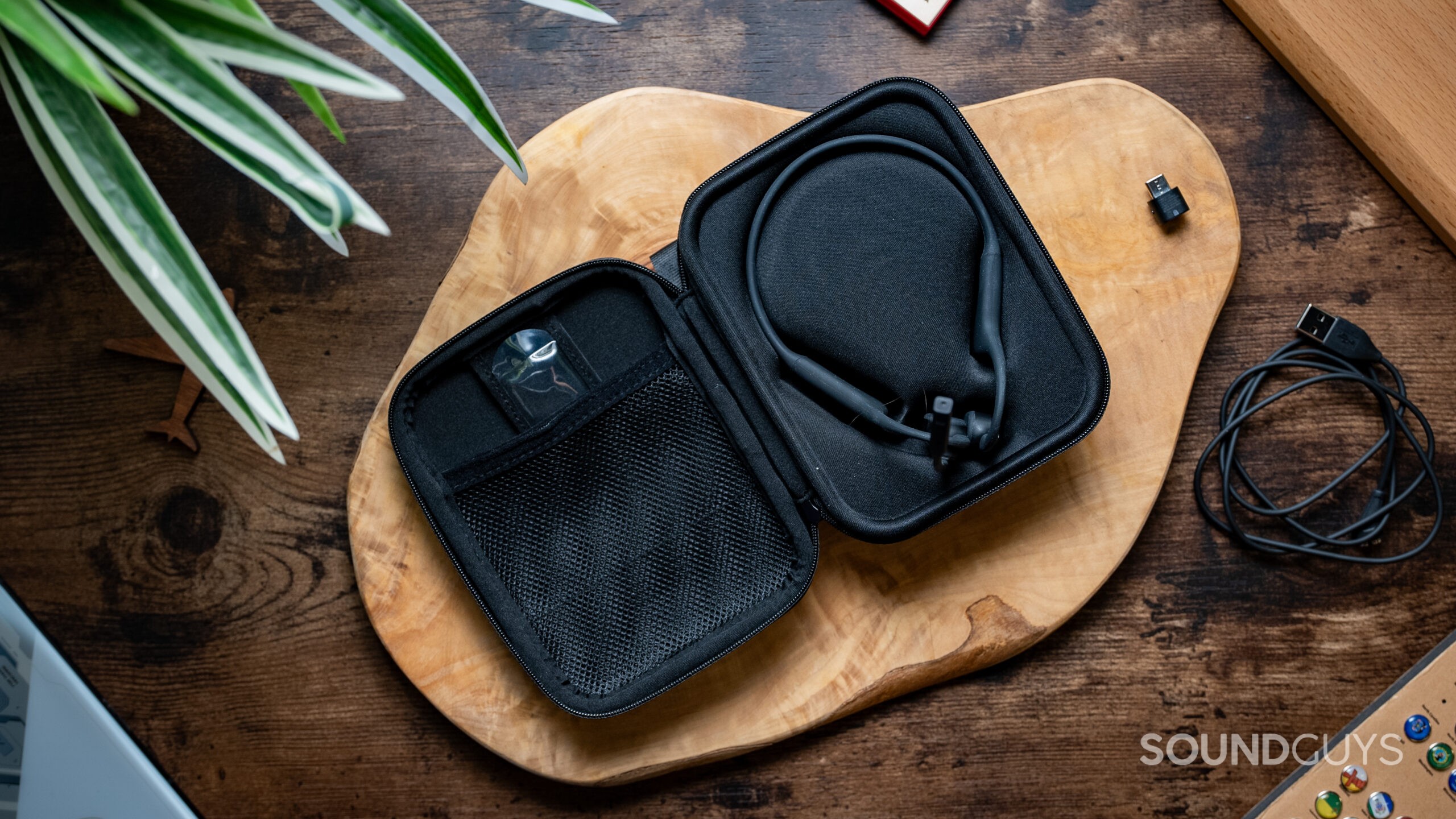
You’ve got two options for connecting the Shokz OpenComm2 UC: Bluetooth or USB-C dongle. It uses Bluetooth 5.1 with the basic SBC codec. The Bluetooth connection remains stable with an iPhone.
One of the main attractions of the Shokz OpenComm2 UC is the USB-C dongle called the Loop110. Shokz has a USB-A version as well. Unlike wireless gaming headsets with adapters, the Loop110 adaptor still uses Bluetooth, not a proprietary 2.4GHz connection. So, in essence, you have two ways to connect via Bluetooth. When plugged into a computer, it connects quickly and stays connected.
To pair the Shokz OpenComm2 UC with a mobile device without the adapter, go about it like you would any other Bluetooth headphones.
- Enable Bluetooth in your device’s settings.
- press and hold the increase volume button from power off until the Shokz turns on, and the LED rapidly blinks red and blue. A voice in the headset will announce you’ve entered pairing mode.
- Select the Shokz OpenComm2 UC in your list of available devices in the Bluetooth settings menu.
To pair the Shokz OpenComm2 UC over Bluetooth with the Loop110, plug in the adapter into your PC.
- For first-time pairings, press the Loop110 multi-function button for two seconds.
- Press and hold the volume up button for two seconds to power on and enter pairing mode on the headset.
- You’ll know you’re connected when the headset announces it.
- To reconnect after you’ve already paired the headset and adapter previously, press the multi-function button on the Loop110 adapter only once and do everything else the same.
How long does the Shokz OpenComm2 UC battery last?
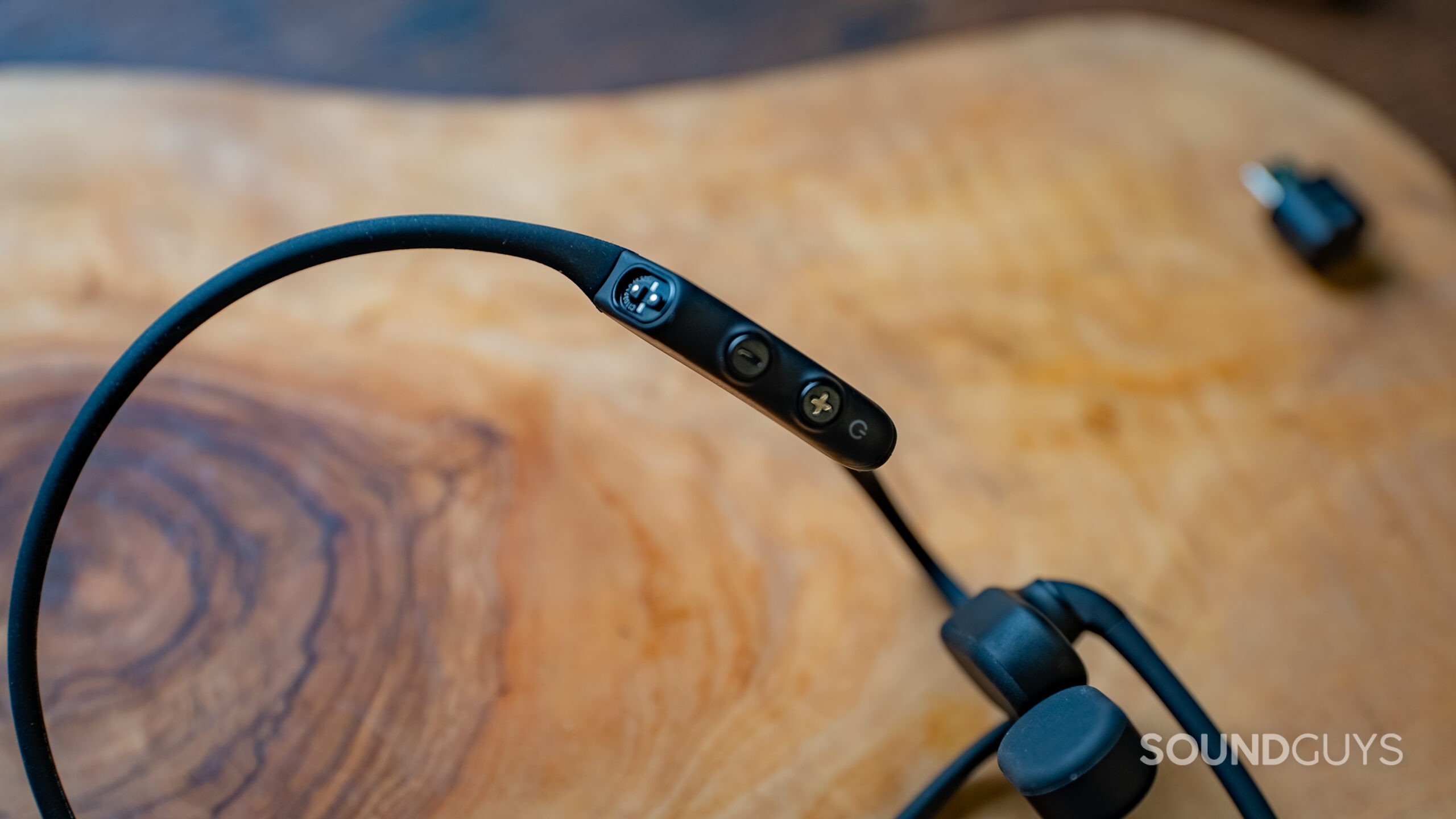
One of the more impressive feats the Shokz OpenComm2 UC achieves is reaching 17 hours and 59 minutes of playback on a single charge, measured with our standard test. Consider that the whole thing only weighs 33 g and packs a battery in there. On the other hand, you’re not dealing with battery hogs like active noise canceling. Also of note, the OpenComm2 UC can stay in standby mode for 14 days.
As noted on other Shokz bone conduction headsets, the proprietary charging cable is annoying. Even Apple has finally moved away from proprietary charging cables. However, kudos to Shokz for providing a cable that is long enough to be useful. At about a meter long, you can plug it into a USB-A port on your computer or charger and set the headset on a desk. It also connects magnetically, taking a cue from Apple MacBooks.
According to Shokz, five minutes of fast charging the OpenComm2 UC provides two hours of battery life.
How well does the Shokz OpenComm2 UC block out noise?
The main selling point of Shokz bone conduction headsets is that you stay aware of your surroundings. Unsurprisingly, then, the OpenComm2 UC blocks basically nothing. This is a double-edged sword, depending on your setting. If you plan on using the OpenComm2 UC in your office with a door to block noise, it should serve you just fine. On the other hand, in an open-concept office or if you work remotely without a dedicated quiet space, you’ll have to contend with hearing your neighbors (and your own) keystrokes.
In this regard, the lack of isolation on the OpenComm2 UC is a one-trick pony, but maybe it’s the trick you want. Not having your ears occluded means staying in touch with your surroundings without the artificiality of transparency mode. It also helps if you find your ears get sweaty from conventional headsets. However, you may find yourself turning up the volume to overcome your surroundings at work.
How does the Shokz OpenComm2 UC sound?

If you don’t get an ideal fit like me, it greatly impacts the sound of the Shokz OpenComm2 UC. To give the headset the benefit of the doubt, I held it where it ought to sit for my evaluation.
You get two EQs with the Shokz OpenComm2 UC. Standard mode’s tuning suits music and general media more than vocal booster mode, which cuts some of the lows and boosts the frequencies where speech resides. Vocal booster mode makes more sense for audiobooks, podcasts, and calls than general listening. However, the standard mode still sounds best if you’re listening to well-produced music or a professional podcast. It’s nothing like our headphone preference curve, but it gets closer than the vocal booster does. Vocal booster tends to sound harsh but might help if somebody’s mic lacks clarity during a meeting.
Lows, mids, highs
When I play Female Energy, Part 2 by Willow, I first notice the pleasantly wide stereo imaging of the OpenComm2 UC. The song’s prominent acoustic guitar plays at a reasonable volume, and Willow’s multi-tracked vocals come through well. Like many Shokz products, the bass and kick sound quiet on the OpenComm2 UC compared to what you’d expect on typical earphones. While bass notes are audible, they lack the full range of frequencies, coming across as quiet, low-pitched blips. As a result, listening to music can be fatiguing with the relative treble and mids emphasis.
Can you use the Shokz OpenComm2 UC for phone calls?
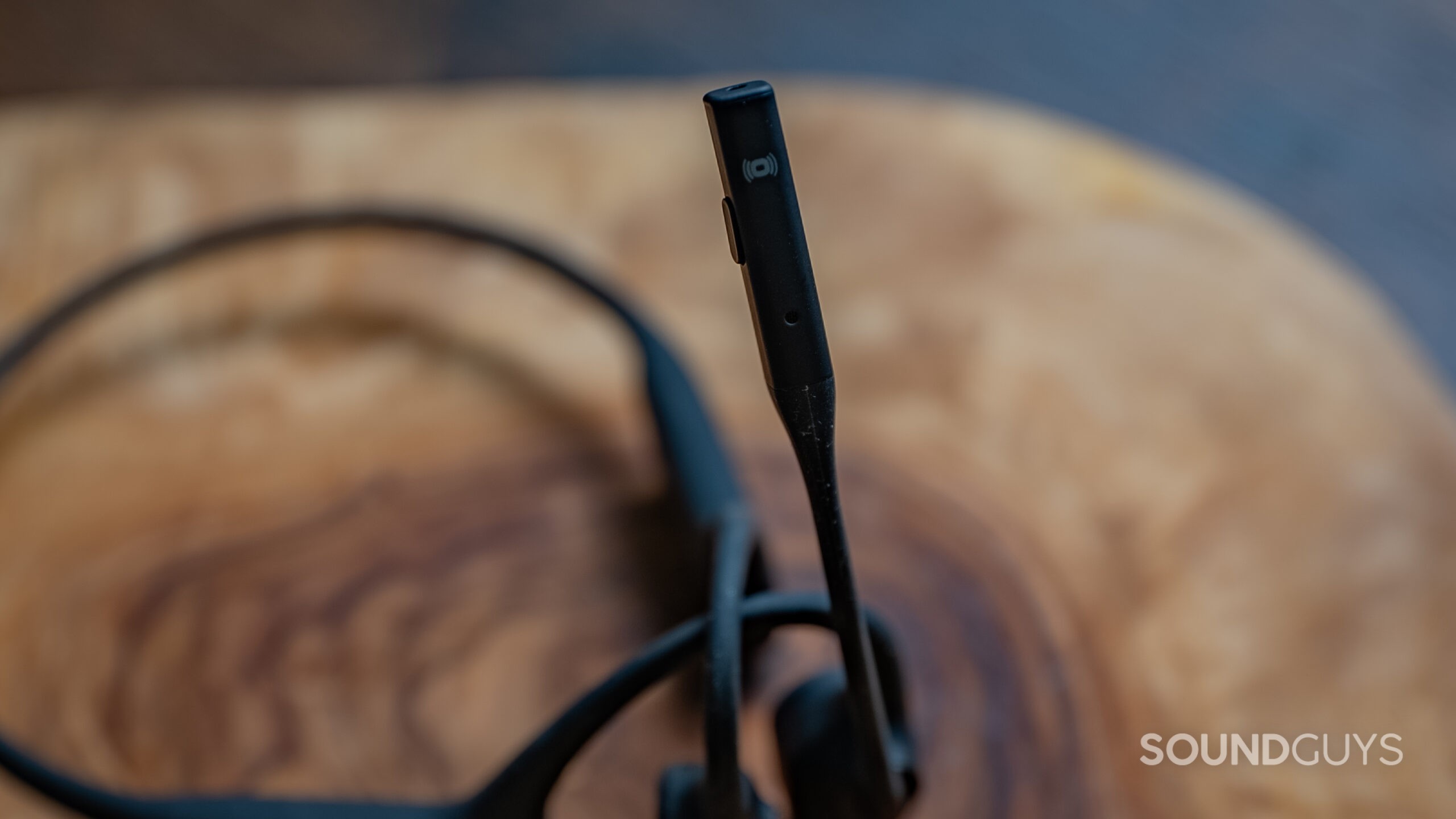
You can certainly use the Shokz OpenComm2 UC for calls; it’s the main focus of this headset with a boom mic. The speech quality provided by the boom mic is excellent, and you should come across loud and clear. Don’t take my word for it. Listen below.
Shokz OpenComm2 UC microphone demo (Ideal conditions):
How does the microphone sound to you?
This headset has particularly notable environmental noise rejection; scarcely any of the reverberations you could expect in an empty, reflective space gets sent by the headset, making your voice clean and clear. Similarly, ambient street noise is virtually eliminated if you take your call outdoors. While some wind will make it through the filtering, it impresses anyway. In an office, every now and then, some keystrokes can be heard. Still, the noise rejection of the OpenComm2 UC makes it a good choice for phone calls and online meetings.
Shokz OpenComm2 UC microphone demo (Office conditions):
Shokz OpenComm2 UC microphone demo (Street conditions):
Shokz OpenComm2 UC microphone demo (Windy conditions):
Shokz OpenComm2 UC microphone demo (Reverberant Space):
Should you buy the Shokz OpenComm2 UC?
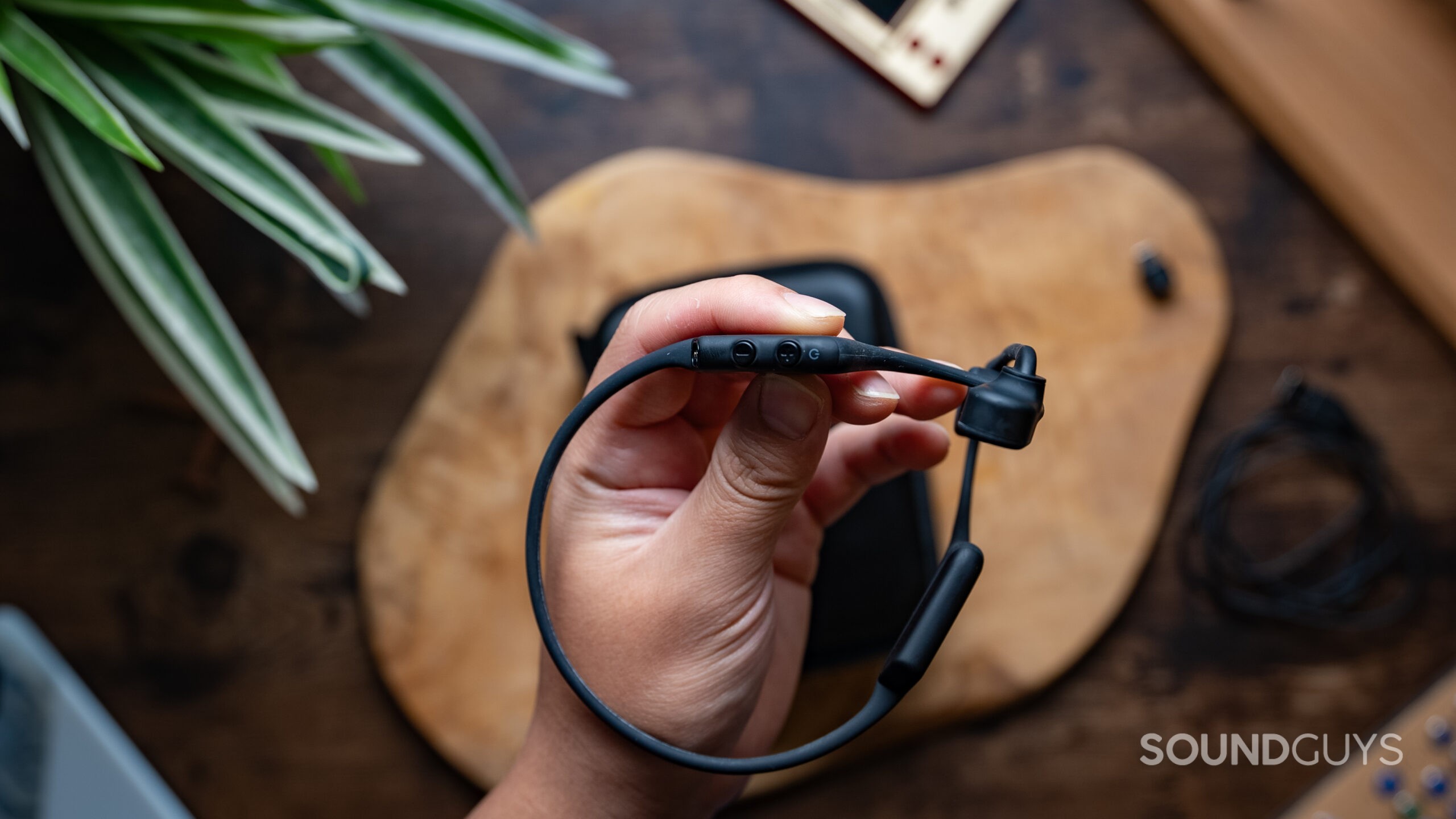
The Shokz OpenComm2 UC is a great example of why you should try before you buy. Instead of local outlets where you can test the fit, seek out retailers with easy returns. Simply, any positives are outweighed if the OpenComm2 UC does not fit. Assuming the OpenComm2 UC fits well, you’ll benefit from a speech-focused sound. If it fits poorly, it sounds less good. You can also take advantage of the microphone’s impressive noise rejection and mute button.
The multi-function button works well, although a second button to space out the commands would be helpful. As always, an IP rating is appreciated, and the internal titanium frame adds confidence in its durability.
The Loop110 module could’ve come with a USB-C and USB-A adapter, as not all offices are caught up to the latest standards. Given that you can buy a universal Bluetooth dongle for use with any Bluetooth headset for about $20, it’s not as big of a selling feature as it may appear.
It’s difficult to enthusiastically recommend the OpenComm2 UC for a few reasons, but the lack of consideration for normal variations in head sizes is chief among them. The price is another reason, as is the lack of acoustic isolating, which most people appreciate when taking calls. Think about how many times you’ve been on a call with your phone to your ear, and you’ve either had to increase the volume to hear the caller better, remove yourself from a noisy environment, or needed to ask somebody nearby to quiet down. $200 is a lot to spend on a headset best worn in a silent room.
What should you get instead of the Shokz OpenComm2 UC?
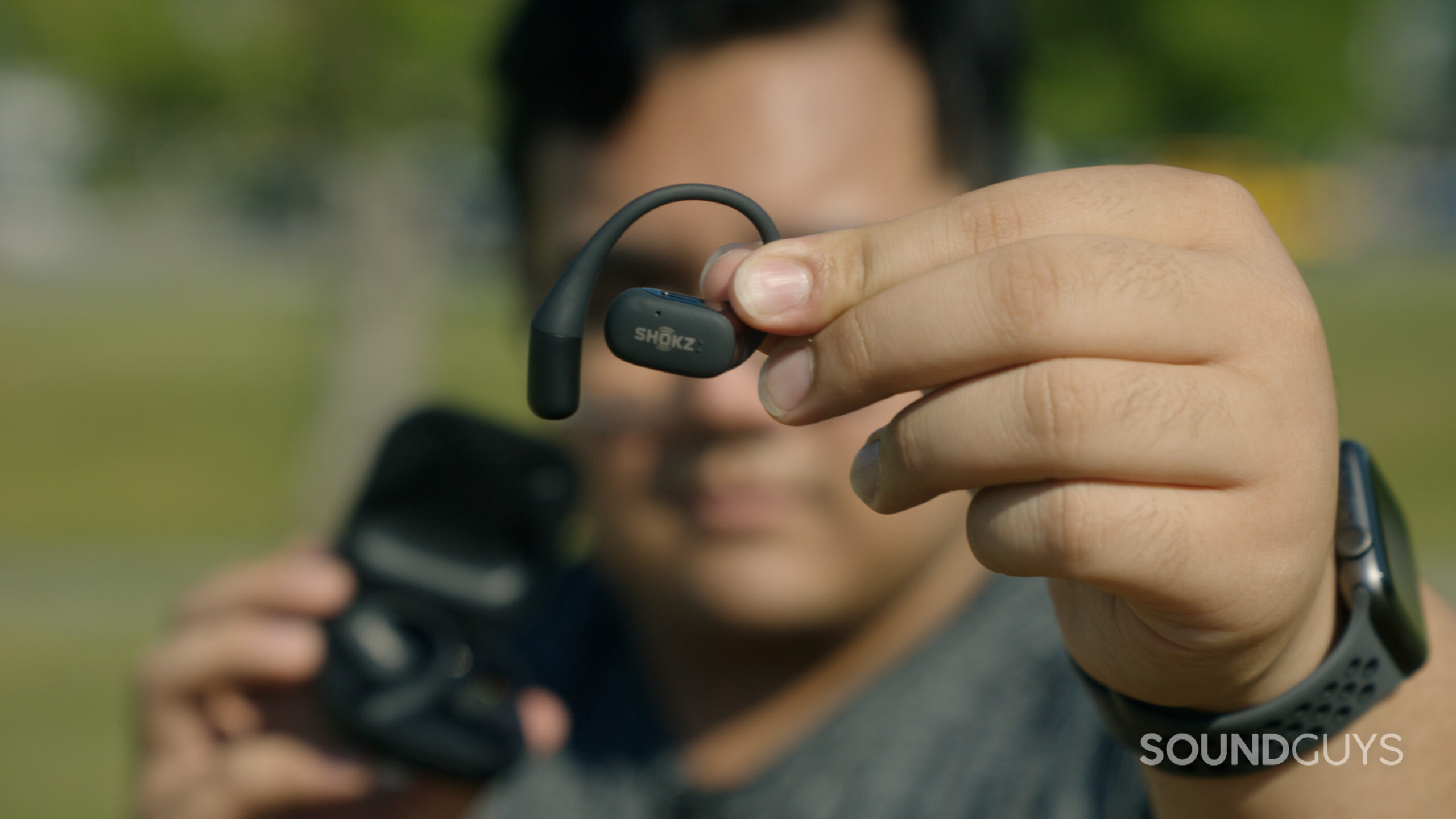
If you want headphones with a Bluetooth dongle, buy one and pair it with a good set of Bluetooth headphones. Lest you think I’ve got a bone to pick with bone-conduction headphones, there are times and places for them. If you go running at night, the awareness offered by bone conduction outweighs any transparency mode. If that’s you, consider some options for your runs, even if they make considerably less sense in an office setting.
Those still unconvinced that isolation is needed should check out the Shokz OpenFit, ($179 at Amazon) offering you a better fit without the headband looping around the back. These use touch controls rather than buttons and aren’t necessarily made for offices, but the microphone sounds better than average earbuds.
Frequently asked questions
The Shokz OpenComm2 UC has Bluetooth multipoint in addition to USB-C connectivity.
There are four variations of the Shokz OpenComm, and all are similar. Most of the differences between them are subtle. For instance, the Shokz OpenComm2 has a mute button and a slightly larger battery (183mAh versus 170mAh), while the Shokz OpenComm can pair using NFC. The headsets designated with “UC” come with USB adapters, and the OpenComm2 UC ships with either a USB-C or USB-A adapter. Meanwhile, the OpenComm UC only has a USB-A adapter.
You only need an hour to charge up the Shokz OpenComm2 UC.
When in pairing mode, the LED blinks quickly red and blue on the Shokz OpenComm2 UC.
UC stands for Unified Communications. This means a headset with a UC certification works with virtually all video conference calling software like Zoom, Google Meet, and MS Teams. You can use the headset without fussing about installing drivers on a computer. It should be a plug-and-go experience with a UC headset. If you use MS Teams almost exclusively, there’s also an MS certification on some headsets, but you can use a UC-certified headset with MS Teams, too.
Thank you for being part of our community. Read our Comment Policy before posting.
